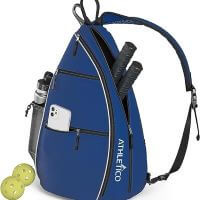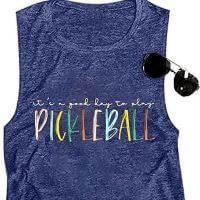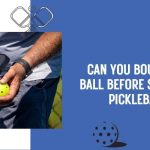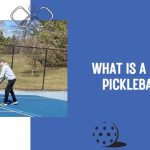You’ll find some rules about how many times the ball can bounce in just about every ball sport you can imagine that relies on your hands. Most people apply this rule to two bounces. But pickleball has two-bounce rules and double-bounce rules – are there any differences between them?
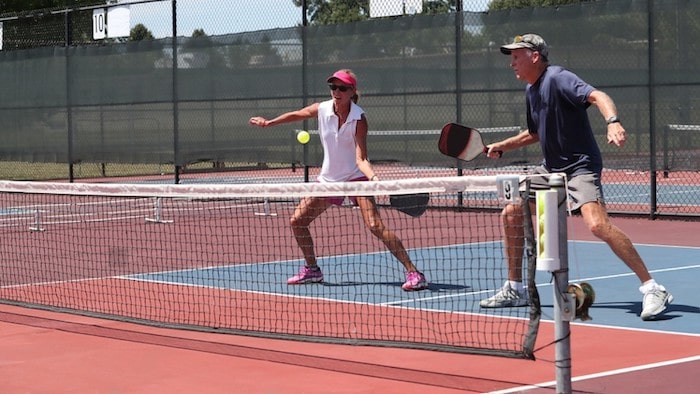
Two bounces mean the ball must bounce once on each side of the court after being served, while a double bounce represents a fault that occurs at any time during a rally.
The similarity of the names certainly contributes to the confusion, but the definitions have been murky for centuries. There are times when the two-bounce rule is the same as the double-bounce rule.
You Might Also Like:
What’s the Difference between Two-Bounce and Double-Bounce?
The only similarity between the two-bounce rule and the double-bounce rule is that both revolve around the number 2 – other than that, they are completely different terms with very different meanings.
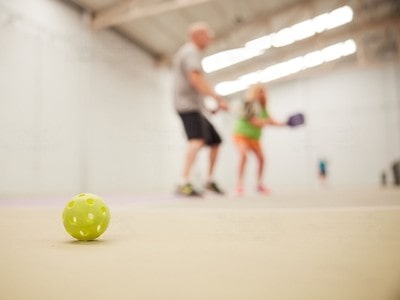
To eliminate the advantage of serving and volleying, the two-bounce rule requires the ball to bounce once before the serve return and again before the third shot. Any ball that bounces twice on the same side within a rally is an immediate dead ball due to the double-bounce fault rule.
To their defence, there’s an extremely good reason why so many people are confused or use the term double bounce when referring to the two-bounce rule. Why? I’ll explain here:
Confusion Between the Two-Bounce Rule and Pickleball Double Bounce Rule
Two-bounce rules have always been part of pickleball, but they weren’t always known as two-bounce rules. The double bounce rule was in effect until 2018! In reality, double bounces refer to two different activities within the same game, so it was a confusing term.
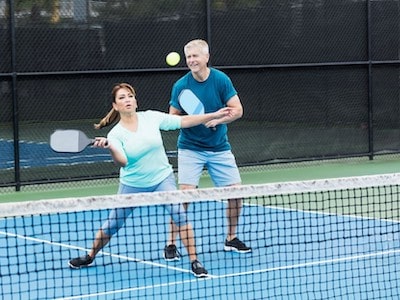
It’s for this reason that the two-bounce rule is still commonly referred to as the double-bounce rule and the reason why it’s historically and contextually accurate. The official USA Pickleball rulebook, however, defines each one differently.
Section 7 of the rule book categorizes both as fault rules, but two-bounce is line-titled as rule 7.A. and double-bounce as rule 7.E.
Even though the two terms have entirely different meanings, the two-bounce rule is not helping reduce overall confusion, especially among new players, due to the vast differences in their meanings.
How to Play Two-Bounce Rule?
The first three shots in a rally are subject to the two-bounce rule. A serve must bounce within the diagonal service area during the first shot. Upon receiving the ball (2nd shot), the receiving team returns it to the serving team. The serving team can return it (3rd shot) after it bounces.
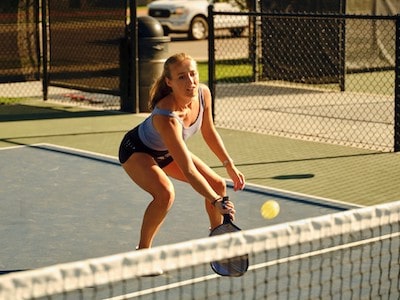
The first and second shots are the only shots that are subject to the bounce requirement. This is how it looks.
- First Bounce: The ball is served to the receiving team.
- Second Bounce: The ball is returned to the serving team.
- During the third shot, the server returns the ball to the receiver, who can volley or hit groundstrokes.
Breaking it down like that makes it seem simple, but you might wonder why it is necessary. So why does this sport have this rule?
Also, read our blogs on:
- What the 5 key strategies to help you in becoming a better pickleball player?
- Pickleball serving drills
- What is a backhand in pickleball?
FAQs
Two-bounce rules make pickleball fairer for serving and returning sides. As a result, there is no serve-and-volley advantage. It prevents volleying as an advantage on the third shot because serving is the only way to earn points. As a result, the receiving team cannot return the serve with a volley. In the absence of this rule, many rallies would end on serve returns or third shots, removing one of pickleball’s most exciting and defining features – dink rallies.
The second bounce of the two-bounce rule can land in your opponent’s kitchen. Second bounces are legal anywhere on the serving side’s playing area. First bounces may not land in the kitchen, including their lines, as the serving rules consider them a fault. Kitchens confuse players of all levels, but this confusion arises from how a serve must avoid the kitchen and still bounce in the service area. The player who receives the ball can send it anywhere, including the kitchen, baseline, and sideline!
Pickleball requires an upward serving motion. When the ball is struck, the server’s arm moves upward. There should be no hitting from above or from the side. You must place the paddle below the level of your navel when it makes contact with the ball.
Wrap Up
With its double bounce rule, pickleball is the only paddle sport that has two different meanings. It continues to confuse many players, even after renaming it the two-bounce rule, because of its history and double meaning. There has always been something unique about pickleball. There is no other way to do it.
So now you understand that a double-bounce rule can refer to two things on the court. Using the fault rule correctly means that the ball bounces twice on the same side. After the first shot, the ball needs to bounce twice, so this is a good time to update them on the terminology change.
Funny thing is, they are using the double bounce rule correctly, just not in the right year.

I am a professional physiotherapist and the author of the BallSportsPro. I worked with athletes of all levels, from amateur to professional, and i helped them overcome injuries and improve their performance. I am a certified Pickleball instructor and has been playing the sport for over 10 years.


